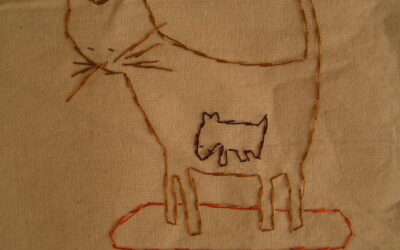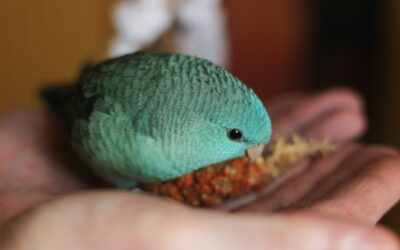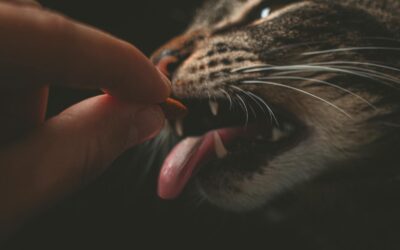Do you know how to pet a cat? Keep reading!
Cats are amazing creatures that bring joy, laughter, and love into our lives. Their soft fur, soothing purrs, and playful spirit can brighten up even the dreariest of days. If you’re a new cat owner or simply have never been a big cat person, it can be difficult to know how to approach and pet your feline friend correctly. But don’t worry! In this blog post, we’ll be discussing the best practices for pet owners petting your cat so that you can win their affection and ensure that both you and your furry companion enjoy your time together.
Approach Slowly and Gently
The first tip for petting a cat is to approach them slowly and gently. Cats are sensitive creatures, and sudden movements or loud noises can scare them. Instead, try to approach friendly cats quietly and let them know you’re there by talking softly. You can even hold out your hand towards them and let them sniff it to gauge their response. Once your cat seems comfortable, you can begin to pet them. If you notice their ears flattening when you’re initiating contact, it’s the wrong time to give them love.
Find the Right Spot
Cats have certain areas that they prefer to be petted, and it’s important to figure out what those areas are for your particular cat. Some cats love to be scratched behind the ears, while others prefer the base of their tail. Generally, the best places to pet a cat are where the scent glands are located around his/face. You can experiment by petting your cat in different areas until you find the spot that they enjoy most. Tip: Most cats do not like their tummy or paw to be touched. There is a likely chance scratching will occur when touching them the wrong way.
Pay Attention to Body Language
Just like humans, cats have their own unique ways of communicating their emotions. Paying attention to your cat’s body language is crucial when petting them. If your cat’s ears are flattened or they seem agitated, it may be a sign that they don’t want to be petted. Similarly to dogs, if your cat moves away or shows signs of irritation, it’s best to stop petting them and give them some space. If they express contentment by staying around, by pressing in for more physical contact or by purring, keep petting them,
Vary Your Touch
Cats can quickly get bored or overstimulated if you pet them in the same way for the same direction for an extended period of time. To keep your cat engaged and happy, try varying your touch. You can switch between gentle strokes, quick pats, and even massage your cat’s muscles from time to time. This will not only keep them entertained but also enhance the bond between you and your cat.
Respect Their Limits
Lastly, it’s important to respect your cat’s limits when it comes to petting. Some cats are more social and love to be petted for long periods of time, while others prefer shorter interactions. If your cat seems to be done with being petted, let them be. It’s better to end the interaction on a positive note rather than push them to their limits.
Petting a cat is an art that requires patience, attentiveness, and respect. By following these simple tips, you can ensure that your interactions with your feline friend are enjoyable and fulfilling. Remember to approach slowly and gently, find the right petting spot, pay attention to body language, vary your touch, and always respect your cat’s limits. With these practices in mind, you and your cat can enjoy years of happy interactions and snuggles.

Where Do Cats Like to be Pet?
Cats are mysterious creatures that have captivated humans for thousands of years. They are known for their independent nature, their agility, and their playful tendencies. But what do cats like when it comes to being petted? Where are their sweet spots? As cat and dog owners, we want to make sure we are showing our feline friends the right kind of affection and that we are not overstepping any boundaries. Next, we will explore where cats like to be petted, what kind of petting they prefer, and what signs to look out for when they’ve had enough.
Ears
Cats’ ears are one of their most sensitive areas and petting them can be very pleasurable for your kitty. Gently stroke the base of their ears and see how they react. If your cat enjoys it, you can continue to move your fingers up and down their ears. If your cat doesn’t like it, they will likely pull away or flatten their ears against their head. Never pull or tug on their ears as this can cause discomfort and even injury.
Chin And Cheeks
Many cats love to be petted on their chin and cheeks. Use your fingertips to gently rub their chin and then move up to their cheeks. Some cats will even lean into this kind of petting, signaling that they want more. Be mindful of your cat’s body language and if they pull away or seem uncomfortable, stop and try a different spot.
Back and sides
Most cats enjoy being petted on their back and sides, but they can be picky about how it’s done. Start by brushing your cat’s fur with your hand, then use a gentle, circular motion or middle finger to pet them. Avoid long strokes from head to tail as this can overstimulate some cats. Pay attention to their body language and if they seem tense or start to twitch their tail, they may be getting overstimulated and it’s time to stop.
Tail
The tail is a sensitive area for cats and not all of them like to be petted here. Some cats may enjoy having the base of their tail scratched or rubbed, while others may find it too stimulating. If your cat enjoys being petted on their tail, be gentle and don’t pull or tug on it.
Belly
Some cats love to have their bellies rubbed, but this is a spot that can be tricky. Not all cats are comfortable with this kind of petting and some may even be defensive when approached in this way. If your cat does enjoy belly rubs, approach them from the side and start with gentle strokes. Never touch a cat’s belly if they are showing signs of aggression or fear.
Understanding where cats like to be petted is an important part of building a strong bond with your feline friend. By approaching your cat with gentle and mindful petting techniques, you can establish a sense of trust and enhance the relationship between you and your kitty. Always be mindful of your cat’s body language and never force them into any kind of interaction that makes them uncomfortable. Remember, cats are individuals and what works for one may not work for another. With patience and time, you’ll learn what your furry friend likes and dislikes when it comes to petting, and you’ll both benefit from the shared affection and trust.

Signs You Shouldn’t Pet Your Cat
Cats are known to be independent creatures. They love having their own space, and they are usually in control of their environment. When they want attention, they will let you know, but when they don’t, they may show signs that they don’t want to be petted. A lot of cats dislike being pet on their belly, tail, legs, and paws, so try to avoid these areas As cat lovers, it’s important for us to be aware of these signs. Next we’re going to discuss some signs that your cat doesn’t want to be petted.
Tail Flicking and Swishing
One of the most obvious signs that a cat doesn’t want to be petted is tail flicking and swishing. This behavior suggests agitation or annoyance, and that your cat is unhappy. Unlike dogs, which often are fine with a rougher pet and quick movements, cats don’t like to be startled. A cat that is relaxed and enjoying being petted will usually have a calm, contented tail.
Ears Flattened
Another sign that your cat doesn’t want to be petted is ears flattened. Flat ears suggest the cat is fearful, anxious, or defensive. If you ignore this behavior and continue petting your cat, you may face an unexpected scratch or bite.
Hiding
When your cat hides, it means he or she wants time alone to relax and recharge. If you attempt to pet a cat that has retreated to its hiding place, you could push them over the edge and ruin any progress you’ve made in bonding with your cat.
Growling and Hissing
Growling and hissing are signs of aggression in cats. If your cat growls or hisses when you try to pet them, you need to back off and give them some space. Aggression can escalate quickly, and you don’t want to end up with a serious injury from a cat bite or scratch.
Dilated Pupils
Dilated pupils indicate an elevated level of excitement or agitation. If your cat’s pupils are dilated, it probably means they are overstimulated and need time to calm down. Petting them in this state can make matters worse and lead to an uncomfortable situation.

Kate’s K9 Pet Care Knows How To Pet A Cat
Our team of dedicated and experienced professionals is committed to providing top-notch care for your cats while you’re away at work. From extra cuddle time to ensuring their comfort and safety, our services will give you peace of mind knowing that your furry companion is in loving hands. So why wait? Take advantage of our services today and give your cat the pampering they deserve!
Trust us, you won’t want to miss out on all the love and joy that Kate’s K9 pet care service can bring to your furry family member. Contact us now and let’s make sure your cat receives all the extra attention they need. Because at Kate’s K9, we treat every cat as if they were our own.
Conclusion
Knowing when to pet your cat is important for maintaining a healthy relationship with your furry friend. If your cat is exhibiting any of the above-mentioned signs, it’s best to back off and give them their space. Sometimes, cats just need some alone time, and that’s okay. Always remember to approach cats with caution and respect their boundaries. By doing so, you’ll have a happy and healthy relationship with your feline companion.







